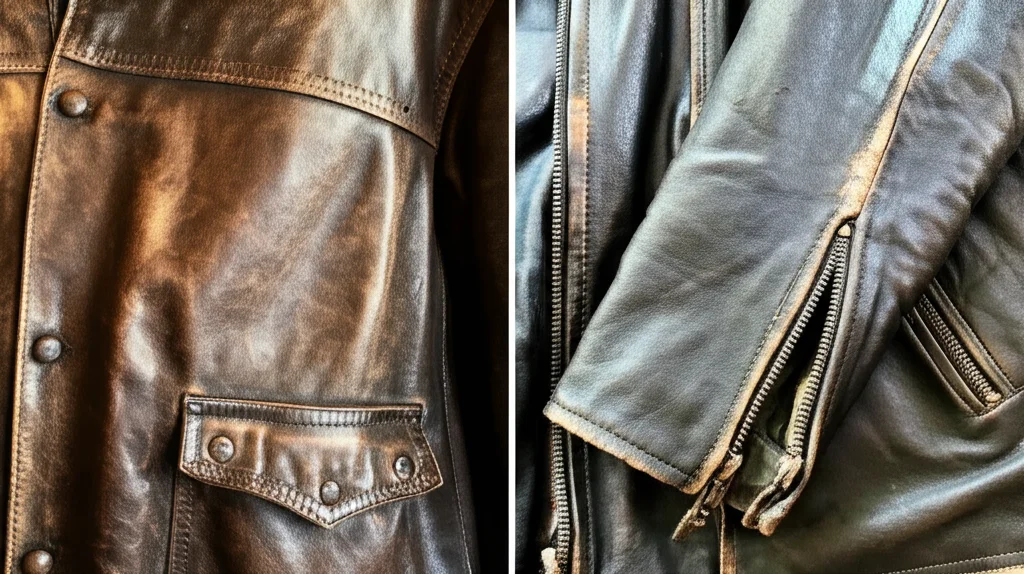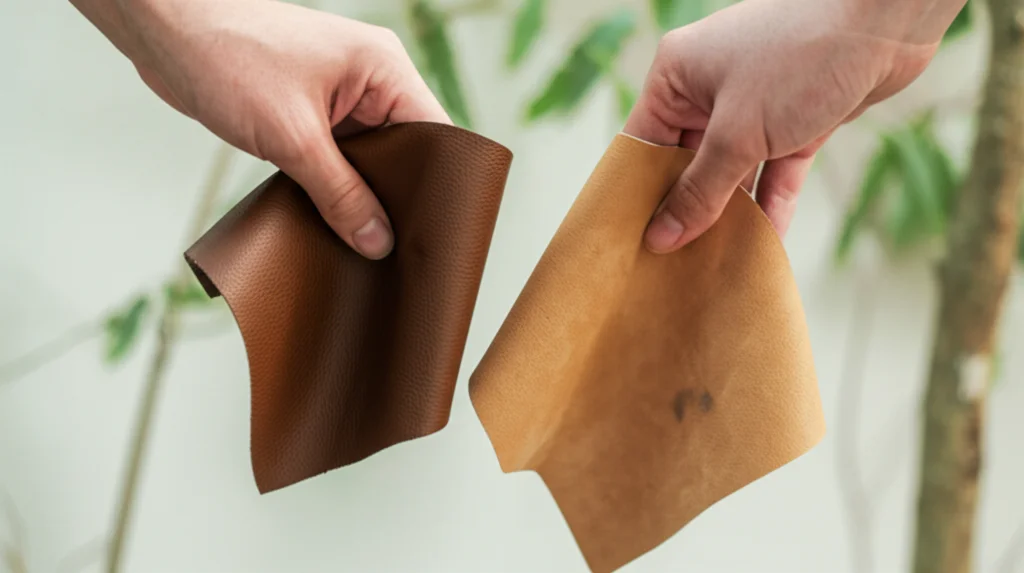Real vs. Faux Leather Jackets: An Honest Look at Quality, Ethics, and Longevity



The quest for the perfect leather jacket often leads to a fundamental question: real or faux? Decades ago, the choice was simpler, with faux leather often looking and feeling like a cheap imitation. Today, advancements in textile technology mean high quality faux and vegan leathers can look remarkably convincing, adding ethical and cost considerations to the mix.
As craftsmen passionate about enduring quality, we naturally have a deep appreciation for genuine leather. However, understanding the differences, benefits, and drawbacks of both real and faux options is crucial for making an informed choice that aligns with your values, budget, and expectations. Let's take an honest look at the key distinctions from an expert perspective.
What is Real Leather?
Genuine leather is derived from animal hides, typically cowhide, lambskin, goatskin, or sheepskin for jackets. The hide undergoes a tanning process to preserve it and make it durable. Key types include:
- Full Grain: The highest quality, using the outermost layer of the hide with its natural grain and imperfections intact. It's durable, breathable, and develops a beautiful patina over time.
- Top Grain: The second highest quality, where the very top layer is sanded or buffed to remove imperfections. It's smoother than full grain but still strong and durable.
- (Lower grades like Genuine Leather splits or Bonded Leather are less common for quality jackets due to lower durability).

What is Faux Leather (Vegan Leather)?
Faux leather is an artificial material designed to mimic the look of real leather. Common types include:
- Polyurethane (PU): Generally softer, more flexible, and more breathable than PVC. Considered a higher quality faux leather.
- Polyvinyl Chloride (PVC): Less flexible and breathable than PU, often used for shinier finishes or items requiring more rigidity.
- Plant Based Alternatives: Newer options made from materials like pineapple leaves (Piñatex), mushrooms (Mylo), or cork are emerging as more sustainable vegan alternatives, though availability in jackets might still be limited.
[IMAGE_REQUEST] Description: Macro close up shot showing the typically uniform, sometimes slightly plastic looking repeating pattern or texture of polyurethane (PU) faux leather. Neutral lighting. Aspect ratio 6:9 height:width. (Placeholder for failed image). Alt text: Close up detail showing the uniform texture of faux leather.
Key Comparison Points
Let's break down the differences across critical factors:
1. Look & Feel
- Real Leather: Offers a unique, natural grain pattern (especially full grain). It has a distinct smell and feels substantial yet supple. It's generally breathable, making it more comfortable to wear for extended periods. The drape and feel vary by type (lambskin is softer than cowhide).
- Faux Leather: Often has a very uniform texture and pattern. High quality PU can feel surprisingly soft, but it typically lacks the depth and unique character of real leather. It is generally less breathable than real leather, which can feel clammy in warmer conditions. It often has a chemical smell, especially when new.
2. Durability & Longevity
- Real Leather: Exceptionally durable, especially full and top grain. It doesn't peel or crack easily with proper care. Instead, it develops a patina, a beautiful aging process where the leather softens, darkens slightly, and acquires character through wear. A well cared for real leather jacket can last for decades, becoming a true heirloom.
- Faux Leather: Durability varies greatly. High quality PU can be quite resilient to scratches initially, but most faux leathers, especially PVC, are prone to peeling, cracking, or delaminating over time, particularly at stress points (collar, cuffs, elbows) or with sun exposure. It does not develop a patina; it degrades.

3. Care & Maintenance
- Real Leather: Requires periodic conditioning (every 6, 12 months) to replenish oils and keep it supple. Needs careful cleaning methods. See our full care guide for details.
- Faux Leather: Generally easier to clean. Most spills can be wiped off with a damp cloth. It doesn't require conditioning. However, once it starts to degrade (peel or crack), it's usually irreparable.
4. Cost
- Real Leather: Significantly more expensive upfront due to the cost of materials and the complex tanning and crafting processes. Considered an investment piece.
- Faux Leather: Generally much more affordable, making leather look styles accessible at lower price points.
5. Ethics & Environment
This is complex, with valid points on both sides.
- Real Leather: Raises animal welfare concerns for some consumers. The tanning process can also be resource intensive and involve harsh chemicals, although more sustainable tanning methods are increasingly used by responsible manufacturers. However, leather is often a byproduct of the meat industry, and its exceptional longevity can be argued as more sustainable than repeatedly replacing disposable items.
- Faux Leather: Avoids animal products, aligning with vegan ethics. However, most traditional faux leathers (PU, PVC) are plastics derived from fossil fuels. Their production can involve toxic chemicals, and they are not biodegradable, contributing to plastic pollution when discarded (which happens more frequently due to lower durability). Newer plant based alternatives aim to address these environmental concerns.

Which Jacket is Right for You?
The best choice depends on your priorities:
- Choose Real Leather if: You prioritize longevity, breathability, a unique natural aesthetic, the development of patina, and view the jacket as a long term investment.
- Choose Faux Leather if: Your primary concerns are affordability, avoiding animal products, or ease of cleaning for minor spills, and you accept a potentially shorter lifespan for the garment.
An Investment in Time
From our perspective, rooted in decades of craftsmanship, the longevity, character, and feel of high quality genuine leather make it an unparalleled investment. It's a material that lives and evolves with you. However, we respect that individual choices involve balancing multiple factors, including ethics and budget.
Ultimately, understanding the true differences between real and faux leather empowers you to choose the jacket that best suits your needs and expectations, ensuring you're happy with your decision for as long as the jacket lasts.
What are your thoughts on real vs. faux leather? Which factors are most important to you? Share your perspective in the comments below!
Subscribe to our Newsletter
Get the latest posts and updates delivered straight to your inbox.